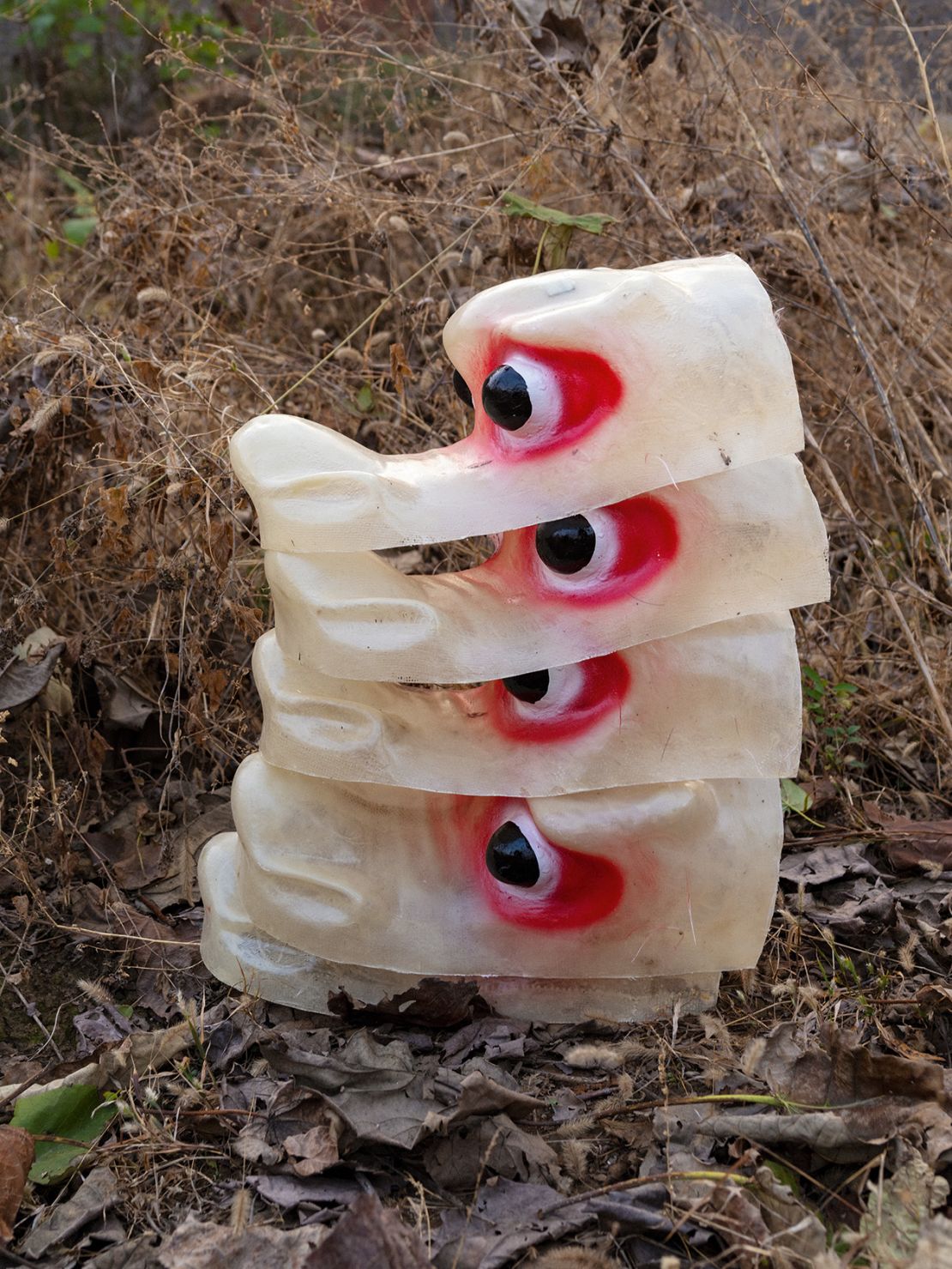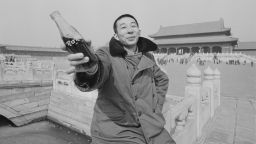Editor’s Note: Sign up for CNN’s Meanwhile in China newsletter, which explores what you need to know about the country’s rise and how it impacts the world.
In photographer Zhang Xiao’s images of the Shehuo festival, an ancient celebration still observed in parts of northern China during the Lunar New Year, rural life comes alive with something altogether more fantastical.
Villagers dressed as cranes, roosters and mythical lions pose for portraits standing amid crops or in fallow farmland. Costumed performers parade past brick houses against hazy backdrops, the eyes of their masks seemingly lost in thought. In a harvested wheat field, a group of almost a dozen men line up to hold aloft a colorful dragon puppet.
In his new book “Community Fire,” Zhang said he wanted to capture the surreal “disconnect” between people’s everyday lives and the mythical personas they assumed.
“Their characters seemed to come from the sky itself, and … formed a huge theatrical stage that transcended the confines of reality, transporting a collective of sleepwalkers to a dreamworld,” he wrote. “I wandered among them and photographed them quietly, because I did not want to wake them up.”

Rooted in millennia-old agricultural practices of worshipping fire and the land, the folk rituals of Shehuo (often translated as “earth and fire”) traditionally entailed praying for good fortune and bounteous harvests, or to drive away demons. Festivities vary between regions but now typically see various performers, from stilt walkers to opera singers, parading through the streets or staging shows.
Today, celebrations coincide with the Lunar New Year, which started on Saturday. As such, they have come to encompass many of the traditions — such as temple fairs and lion dances — practiced around China during this period. (Lunar New Year celebrations usually last more than two weeks, with Shehuo festival taking place on the season’s 15th and final day.)
Shehuo celebrations have been recognized by the Chinese government in its UNESCO-style list of “intangible cultural heritage.” But the festival’s place in a rapidly urbanizing country remains under threat, said Zhang, adding that most of the performers he encountered had migrated to cities and only returned to their villages for the holiday.

“The significance of traditional customs can no longer meet the needs of modern lives,” the photographer told CNN via email. “Today’s young people are more concerned about the internet and games. They are not even willing to try and understand traditional cultures. I think that’s sad.”
E-commerce and the death of craft
Hoping to document the festival’s disappearing traditions — and the costumes and props associated with them — Zhang spent over a decade photographing Shehuo events at villages in Shaanxi and Henan provinces. A selection of the images, which were shot between 2007 and 2019, is currently on show in the US at Harvard University’s Peabody Museum of Archaeology & Ethnology (and over 100 of them were published in “Community Fire”).
As well as capturing rites, rituals and folklore, the photos speak to the proliferation of mass-produced paraphernalia that has transformed the festival since the turn of the 21st century. One image depicts a stack of expressionless plastic masks; a set of 12 eerie pictures shows smiling prop heads hanging from trees in flimsy carrier bags.

Several pages of Zhang’s book are dedicated to screengrabs of Alibaba-owned shopping platform, Taobao, where Shehuo items can be purchased at bargain prices. They range from an elaborate two-person lion dance costume, offered for just 360 yuan ($50), to a selection of headdresses priced under 17 yuan ($2.40).
The rise of cheap goods and e-commerce has been a mixed blessing for these villages. Some of them — including Huozhuang, in Henan province, which features heavily in Zhang’s project — have taken advantage of the opportunity. The photographer visited and documented several small family workshops that buy semi-complete products in large quantities online before hand-finishing them and selling them on platforms like Taobao for profit.
“In some villages, virtually the entire population has been mobilized to produce and sell Shehuo props,” the photographer writes in his book.

But with economic opportunity comes a loss of traditional skills and customs. Materials like paper and bamboo have been replaced by cheap wire frames, plastic and synthetic fabrics, said Zhang, who grew up in a rural area of China’s Shandong province but is now based in Chengdu, one of the country’s largest metropolises in the southwest.
A third-generation prop maker told Zhang that, in the photographer’s words, that he “lamented the gradual disappearance of traditional crafts.” But most of the villagers the photographer encountered were indifferent to the loss of cultural heritage, he claimed.
And while Zhang, as a documentarian, assumed the role of a “quiet spectator” while on assignment, he nonetheless expressed regret at the festival’s rapid commercialization.
“People are not focused on how to improve product quality and craftsmanship,” said the photographer, who is currently working on a documentary about life in rural China.
“Instead, they are obsessed with how to manufacture these products as quickly as possible, and at the lowest cost, so as to gain an advantage against the competition. This has led to a gradual decline in product quality, and the entire industry has fallen into a vicious cycle of price wars.”
“Community Fire,” published by Aperture and Peabody Museum Press, is available now. An accompanying exhibition is on show at the Peabody Museum of Archaeology & Ethnology in Cambridge, Massachusetts until April 14, 2024.







